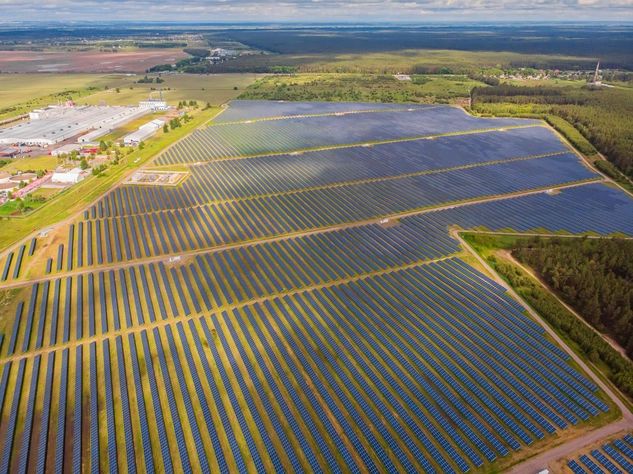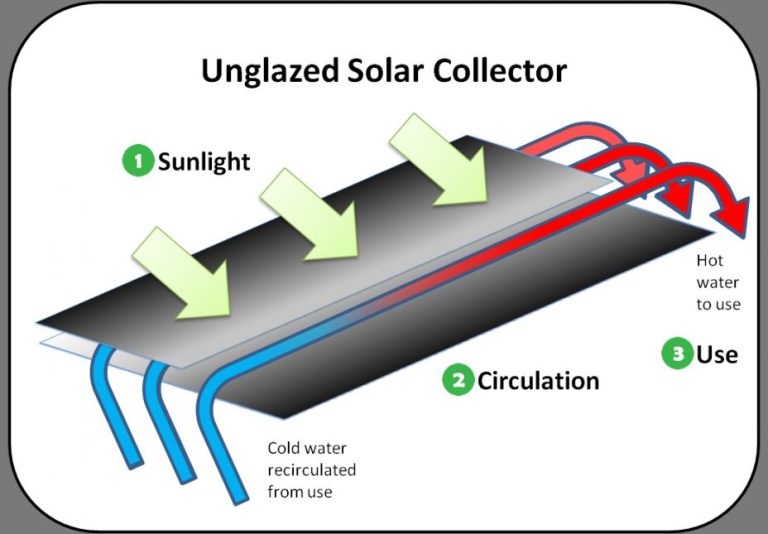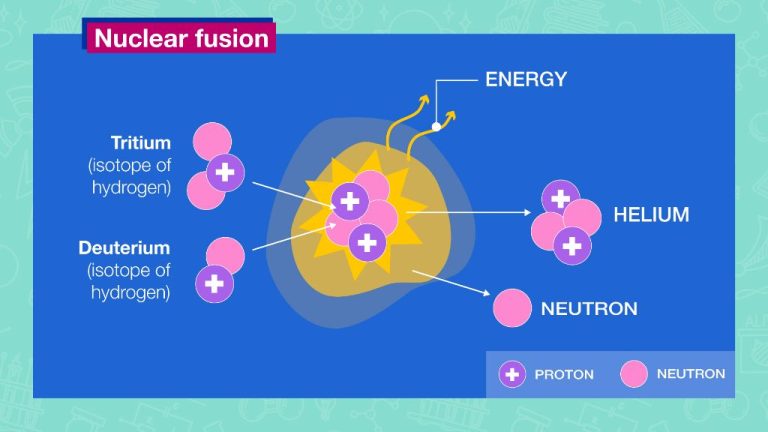Which Area Has The Highest Potential For Solar Power?
Solar power potential refers to the amount of solar energy available in a geographic area for electricity generation. It depends on factors like solar irradiation, available land area, infrastructure, storage capabilities, costs, and government policies. Identifying regions with high solar potential is important for climate change mitigation, energy security, and economic development.
This article examines the key factors that determine solar power potential across different world regions. It evaluates which areas have the highest potential based on solar resources, land availability, population needs, infrastructure, storage capabilities, costs, and policy incentives. The goal is to provide useful analysis on where solar power can make the biggest impact globally.
Solar Irradiation
Solar irradiation refers to the amount of solar energy received at a location on the Earth’s surface. It is measured in kilowatt-hours per square meter (kWh/m2). Solar irradiation varies significantly around the world based on latitude, climate, and weather patterns. Equatorial regions tend to receive the most solar irradiation due to their proximity to the equator. Desert regions also tend to have high solar irradiation due to consistent sunny conditions.
According to solar irradiation maps, the highest levels are found in parts of Africa, the Middle East, India, Mexico, Chile, Australia, and the southwestern United States. For example, annual global horizontal irradiation in parts of the Sahara Desert can exceed 2,500 kWh/m2. Comparatively, northern countries like Canada and Russia often receive less than 1,000 kWh/m2 due to their higher latitudes. The consistently sunny and arid climate of deserts and low latitude areas maximizes solar irradiation.
When assessing the potential for solar power, higher solar irradiation levels translate to higher potential electricity generation from the same solar installation. Therefore, regions with abundant solar resources have an inherent advantage for generating solar power. However, other factors like government policies, population density, energy demand, and infrastructure must also be considered.
Land Availability
One of the most important factors in determining which area has the highest potential for solar power is the amount of vacant land available for building large solar farms. Solar farms require significant amounts of flat, sunny, unused land in order to generate utility-scale electricity. Areas with an abundance of vacant, undeveloped land are ideal locations for solar development.
In the United States, the Southwest region has the most available vacant land that could be used for solar farms. This includes states like California, Arizona, New Mexico, Nevada, Utah, and parts of Colorado and Texas. The landscape in the Southwest tends to be flat, arid, and sunny – perfect conditions for solar power generation. Moreover, vast areas of the Southwest consist of barren deserts and undeveloped rural land that could potentially host solar installations.
In contrast, regions like the Northeast and Midwest have far less vacant land available. These parts of the country have high population densities and most land area consists of forests, urban development, or agriculture. While solar power is still viable in these regions, there are fewer opportunities to build utility-scale solar farms compared to the wide open spaces of the Southwest deserts.
Overall, the abundance of vacant, unused land in the American Southwest gives this region the highest potential capacity for solar power generation from large solar arrays and farms.
Population Density
Population density plays a key role in determining which areas have the highest potential for solar power. More densely populated areas generally have higher energy demands, making solar power more critical to meet their needs. On the other hand, less densely populated rural areas may have ample unused land for solar farms but lower energy requirements.
Globally, the most densely populated regions are in Asia and Europe. For example, South and Southeast Asian countries like India, Bangladesh, and the Philippines have population densities over 300 people per square kilometer. Major cities like Mumbai and Delhi have densities over 20,000 people per square kilometer. In contrast, Canada and Australia have population densities under 5 people per square kilometer.
With their large and concentrated populations, urban centers in India and China have massive energy demands. This creates major opportunities for distributed solar generation on rooftops and other available urban spaces. Meanwhile, the vast open lands and strong solar resources of Australia’s interior could support massive centralized solar farms, despite the lower local energy demand.
So while both high and low density areas have potential, the economics and logistics of solar differ greatly between them. Densely populated regions tend to have the urgent need but face land constraints, while rural areas have fewer energy needs but ample open space for solar infrastructure.
Energy Demand
Global energy demand is increasing rapidly as populations grow and developing nations industrialize. According to the International Energy Agency (IEA), energy demand grew 2.3% in 2018, the fastest growth this decade. The largest increases came from India and China as they build infrastructure and expand manufacturing capabilities.

Higher energy demand correlates strongly with increased potential for solar power. Solar only accounts for around 2% of global electricity generation currently. As total energy demand rises, especially in sunny regions like the Middle East, Africa, and Southern Asia, there is room for solar to supply a larger portion of new electricity generation. The modular nature of solar power plants allows capacity to be added incrementally to match growth in energy demand.
Urbanization trends will also drive growth in distributed solar generation. As developing countries urbanize and connect more citizens to electric grids, rooftop and local solar generation can help meet demand growth in cities and suburbs. This more decentralized approach reduces the need for large-scale transmission projects and provides greater grid resilience.
In summary, rising global energy demand, urbanization, and solar’s tiny market share mean the potential for solar power will surge. The countries and regions with the fastest growing demand are often those with the best solar resources. This synergy bodes well for solar’s ability to meet a substantial share of new electricity generation going forward.
Government Policy
Government policies and incentives have played a major role in the growth of solar power across regions. Countries with strong policy support have seen solar expand rapidly, while growth has been slower in places with less robust policies. Key factors driving policy support include environmental goals, energy security aims, and economic development objectives.
Europe has been a leader in enacting pro-solar policies. Feed-in tariffs that guarantee long-term above-market rates for solar power generation catalyzed an early boom in countries like Germany, Spain and Italy. Mandatory renewable energy targets, carbon pricing programs, and direct subsidies have also spurred growth. However, policy support has waned in recent years as costs have declined.
China enacted powerful policy incentives that helped it become the world’s largest solar market. Policies included guaranteed grid access, competitive bidding mechanisms, and programs linking solar deployment goals to provincial officials’ job performance. The U.S. has a patchwork of policies, with some states more supportive than others. Federal tax credits have underpinned the market nationally.
Developing countries have the greatest potential for future expansion. Tailored policies that account for limited infrastructure and financing barriers will be key. Many nations are aiming to leverage solar’s modular nature and falling costs to help meet rising energy demand and development needs.
While government policies may evolve, solar power’s competitiveness increasingly relies on its underlying cost advantages rather than financial incentives. But policy support will remain important for guiding solar’s continued growth, addressing grid integration challenges, and helping achieve decarbonization goals.
Infrastructure
The infrastructure required to utilize solar power potential at scale includes transmission lines, inverters, and energy storage facilities. Grid infrastructure is a key factor in determining which regions can best leverage solar power.
Areas with strong existing transmission networks have an advantage for connecting large utility-scale solar farms. Upgrading transmission allows generated solar electricity to be distributed more widely. Interconnections between regional grids can balance supply and demand across larger areas.
Inverter technology is also important for converting DC power from solar panels into usable AC power. Improvements in inverters allow more flexible solar integration into electricity grids. Smart inverters with robust grid support capabilities are preferred.
Energy storage infrastructure helps address solar intermittency issues. Battery storage systems can store excess daytime solar generation for use when the sun is not shining. Pumped hydro and thermal storage are other large-scale options suitable for solar power.
Regions with high solar potential but lacking grid infrastructure may require substantial investments to fully utilize their renewable energy resources. Assessing current infrastructure and development needs is an important criteria.
Storage Capability
Storage is a critical component of solar power systems. Solar energy can only be generated during daylight hours, but energy demand continues 24/7. Storage provides a way to retain excess solar power during sunny times for use at night or on cloudy days. The availability of storage capacity is an important consideration for the viability of solar power in any region.
There are a few main storage technologies used in conjunction with solar power around the world:
- Batteries – Lithium-ion batteries have become the dominant storage choice for large and small-scale solar installations. Costs have declined in recent years making batteries more affordable.
- Pumped hydro storage – This involves pumping water uphill into a reservoir when solar supply exceeds demand, then releasing it through hydroelectric turbines when power is needed. Pumped hydro accounts for over 90% of global energy storage.
- Thermal energy storage – Excess solar thermal heat can be stored in high heat capacity materials like molten salt. The stored heat is later used to generate steam to drive turbines.
- Hydrogen production – Excess solar electricity can be used to generate hydrogen through electrolysis. The hydrogen can then provide fuel for electricity generation or vehicles.
Regions with greater existing storage infrastructure or geographic potential for storage like pumped hydro may be able to scale solar power more readily. Cost-effective grid-scale storage solutions will be a key enabler for continued growth of solar around the world.
Costs
The cost of solar power varies significantly by region due to differences in solar irradiation, labor costs, government incentives, and more. Some key factors impacting solar power costs include:
– Installation Costs: Regions with higher labor costs will have higher installation costs for solar panels and associated equipment. For example, installation costs are generally higher in Western Europe vs. China or India.
– Panel Prices: Solar panel prices have declined rapidly but can still vary based on transportation costs to different regions, import tariffs, and local taxes/incentives.
– Capacity Factors: The amount of solar irradiation in a region impacts capacity factors. Solar farms in sunnier locations will produce more energy for the same generation capacity, lowering the levelized cost.
– Government Incentives: Some governments provide generous feed-in tariffs, tax credits, rebates, and other incentives to promote solar adoption. This improves the economics of solar in those regions.
– Financing Costs: Interest rates and ability to access project finance varies regionally, impacting solar development costs.
In general, solar power costs are lowest in regions like the Middle East and Chile with excellent solar resources. Costs tend to be higher in places like Europe and Japan with less ideal solar profiles and higher labor costs. However, strong government support in countries like Germany and Japan is driving rapid solar growth despite the higher costs. The continued decline in solar power costs globally makes it an increasingly attractive option across many geographies.
Conclusions
Based on the key factors we examined, including solar irradiation, land availability, population density, energy demand, government policy, infrastructure, storage capability, and costs, the region with the highest potential for solar power is likely the Middle East and North Africa.
This region has some of the highest levels of solar irradiation in the world, with abundant unused desert land to host large-scale solar installations. Many countries in the region have growing populations and rising energy demands, providing a strong incentive to tap into solar power. Government policies are generally favorable, with a push towards renewable energy and infrastructure investments underway. Improvements in storage technology and declining solar costs have also made solar more viable here.
In conclusion, the combination of high solar resources, policies supportive of renewables, growing energy demand, and land availability make the MENA region stand out as having the greatest untapped potential for expanded solar power generation in the years ahead.




